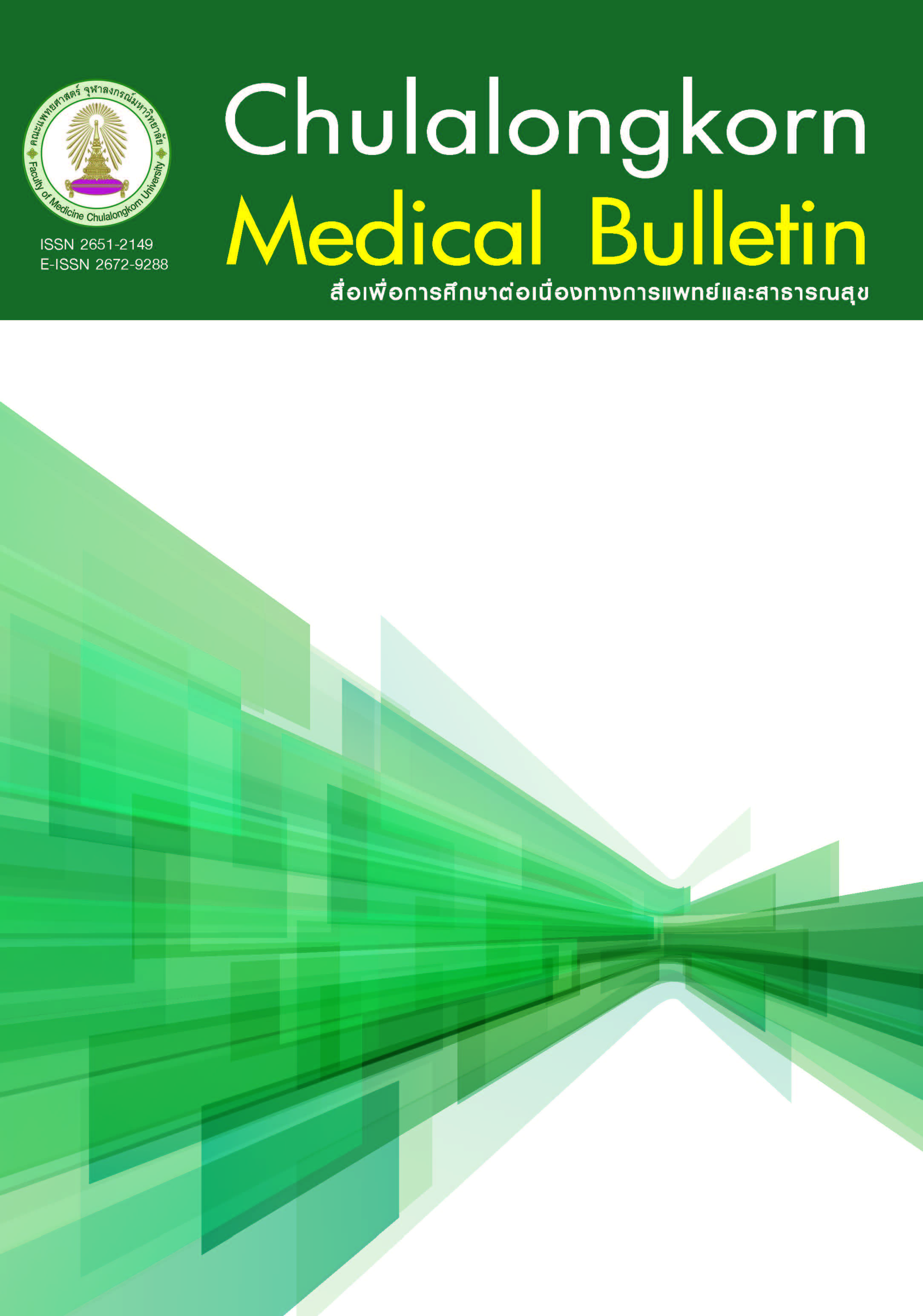Relationships among pain, anxiety, social support, and post concussive syndromes
Keywords:
Post concussion syndromes, pain, anxiety, social support, head injuryAbstract
Background: Individuals with head injury are at risk of having post concussion syndromes (PCS) for months or years after their injury. Currently, studies investigating PCS and its correlates are limited in Thailand.
Objectives: To investigate PCS and the relationships among pain, anxiety, social support, and PCS in persons after head injury.
Methods: This was a descriptive correlational research. One hundred and forty-three patients with head injury were recruited at out-patient Departments of Neurological Surgery, Bhumibol Adulyadej Hospital, and Police General Hospital. A purposive sampling was used. The instruments of the study consisted of problem checklist as a screening instrument, demographic data questionnaire, an illness data questionnaire, the Rivermead post-concussion symptoms questionnaire, a pain scale, the State - Trait Anxiety Inventory, and a social support questionnaire. Data were analyzed by using descriptive statistics, and Pearson product-moment correlation.
Results: 78.3% of the sample reported PCS with more than 6 symptoms. The most common symptom was headache (93.7%); sleep disorders (83.2%); slow thinking (73.4%); and light sensitivity (72.7%). The highest severity of PCS reported was headache (2.51 1.08), followed by sleep disorders (1.93
1.31), and dizziness (1.67
1.52), respectively. It was found that PCS was significantly related to pain (r = 0.393, P < 0.01), anxiety (r = 0.737, P < 0.01), and social support (r = -0.291, P <0.01).
Conclusion: Pain, anxiety and social support correlated with PCS. Therefore, the medical staff should deal with such factors to reduce the symptoms. Future studies are needed to explore other factors related to PCS.





